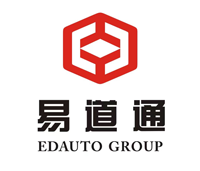Global market opportunities
In recent years, China’s new energy vehicle industry has risen rapidly and has become the world’s largest electric vehicle market. According to the China Association of Automobile Manufacturers, in 2022, China’s new energy vehicle sales reached 6.8 million, accounting for nearly 60% of the global market. With the global emphasis on environmental protection and sustainable development, more and more countries and regions have begun to promote the popularization of electric vehicles, which provides a broad market space for the export of China’s new energy vehicles.
Chinese new energy vehicle manufacturers, such as BYD, NIO, and Xpeng,have gradually gained a foothold in the international market with their technological innovation and cost advantages. Especially in the European and Southeast Asian markets, Chinese brand electric vehicles are favored by consumers for their high cost performance and long driving range. In addition, the Chinese government’s support policies for new energy vehicles, such as subsidies and tax incentives, also provide strong guarantees for the internationalization of enterprises.
Challenges posed by tariff policies
However, as China’s exports of new energy vehicles grow, tariff policies in the international market have begun to pose challenges to Chinese companies. Recently, the US government has imposed tariffs of up to 25% on electric vehicles and their components made in China, which has put many Chinese new energy vehicle manufacturers under tremendous cost pressure. Take Tesla as an example. Although it has performed strongly in the Chinese market, its competitiveness in the US market has been affected by tariffs.
In addition, the European market is gradually tightening its regulatory policies on Chinese new energy vehicles, and some countries have begun to conduct anti-dumping investigations on Chinese electric vehicles. These policy changes have made the export of Chinese new energy vehicles face uncertainty, and companies have to re-evaluate their international market strategies.
Finding new solutions and coping strategies
Faced with an increasingly severe international trade environment, Chinese new energy vehicle manufacturers have begun to actively seek coping strategies. On the one hand, companies have increased their investment in research and development, striving to improve the technical content and added value of their products to enhance their competitiveness in the international market. On the other hand, many companies have begun to explore diversified market layouts and actively explore emerging markets such as Southeast Asia and South America to reduce their dependence on a single market.
For example, BYD announced plans to build a production base in Brazil in 2023 to better meet the needs of the local market. This move will not only reduce tariff costs, but also enhance the brand’s local recognition and influence. In addition, NIO is also actively deploying in the European market, planning to set up sales and service networks in Norway, Germany and other countries to enhance its market penetration.
In general, although China’s new energy vehicle exports face challenges in tariff policies and market supervision, Chinese companies are still expected to occupy a larger share of the global new energy vehicle market through technological innovation and market diversification strategies. As global demand for electric vehicles continues to grow, the future of China’s new energy vehicle industry remains promising.
Email:edautogroup@hotmail.com
Phone / WhatsApp:+8613299020000
Post time: May-12-2025



